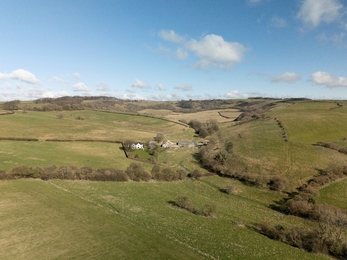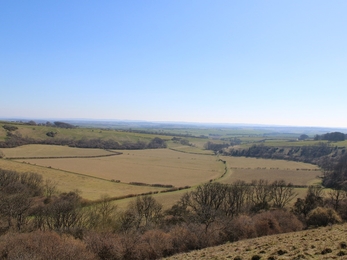We are incredibly excited to work with Dorset Wildlife Trust on this project to research and develop a deeper understanding of the natural and historic landscape of Lyscombe so that it can be managed, enhanced, and restored through the Countryside Stewardship Scheme. Our work will influence which management techniques and practices are used, alongside improving interpretation around the site.
This is a fantastic opportunity to collaborate with specialists from archaeology, heritage, ecology, arboriculture, structural engineering and many more to develop a programme bespoke for this area and the resource.
While there is a wealth of information about the natural landscape, our understanding of the historic elements is more limited. The site is already known for having a rich historic landscape, with signs of human activity dating back over 12,000 years. There is evidence from many significant periods, including Bronze Age barrows and cross dykes, Iron Age and Roman field systems. There are also remains of a medieval chapel and a deserted settlement, as well as post-medieval quarrying. However, the conditions of these remains, their relationships with each other, and the development of this landscape is not yet fully understood.
The Stantec team, involving specialists including ASGS Geospatial Surveys, æt wīcum Heritage and Reclaim Heritage, are compiling all known resources alongside new information, gathered from on-site drone flights, geophysical surveys, building recording and earthwork surveying, to better understand and interpret the remains. Our aim is to create a database which helps to navigate this complex landscape which will eventually be accessible via Historic England and Dorset Council. Our work will also be published and used to update the national designations for this area.
To deliver this, however, we need your help. Do you have information about the history and heritage of this site? If so, we are keen to hear from you as this information will contribute to our research. Please contact us by email



